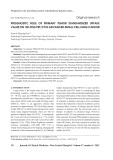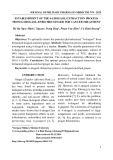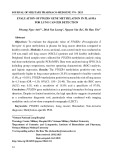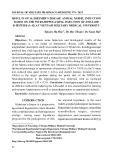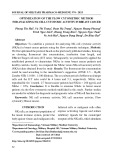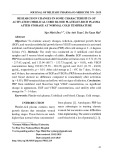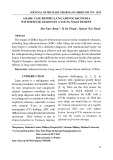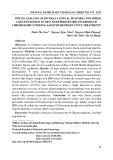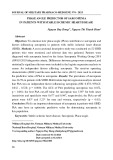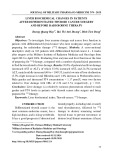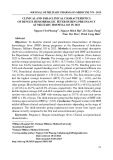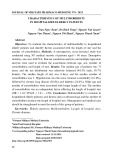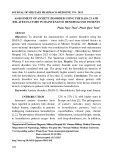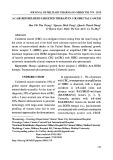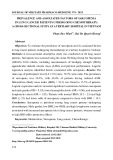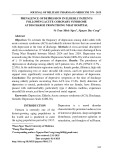
JOURNAL OF MILITARY PHARMACO-MEDICINE N04 - 2025
14
EVALUATION OF PTGER4 GENE METHYLATION IN PLASMA
FOR LUNG CANCER DETECTION
Phuong Ngoc Anh1,3, Dinh Van Luong1, Nguyen Van Ba2, Ho Huu Tho3*
Abstract
Objectives: To evaluate the diagnostic value of PTGER4 (Prostaglandin E
Receptor 4) gene methylation in plasma for lung cancer detection compared to
healthy controls. Methods: A cross-sectional, case-control study was conducted on
149 non-small cell lung cancer (NSCLC) patients and 100 healthy individuals.
Peripheral blood samples were collected for PTGER4 methylation analysis using
real-time methylation-specific PCR (MSP). Data were analyzed using SPSS 26.0,
including group comparisons, receiver operating characteristic (ROC) analysis,
and logistic regression. Results: The PTGER4 methylation positivity rate was
significantly higher in lung cancer patients (18.8%) compared to healthy controls
(3.0%, p < 0.001). PTGER4 methylation positivity increased the risk of lung cancer
by 6.3 times (OR = 6.30; 95%CI: 1.90 - 20.40). The area under the ROC curve
(AUC) was 0.58, with a sensitivity of 18.8% and a specificity of 97.0%.
Conclusion: PTGER4 gene methylation is a promising biomarker for lung cancer
detection. Despite its limited sensitivity, the high specificity suggests its potential
as a confirmatory diagnostic tool, particularly when combined with imaging
modalities such as low-dose computed tomography (LDCT).
Keywords: PTGER4 methylation; Lung cancer; Biomarker; Non-invasive
diagnosis; Methylation-specific PCR.
1Vietnam National Lung Hospital
2Oncology Center, Military Hospital 103, Vietnam Military Medical University
3Department of Genomics and Cytogenetics, Institute of Biomedicine and Pharmacy,
Vietnam Military Medical University
*Corresponding author: Ho Huu Tho (hohuutho@vmmu.edu.vn)
Date received: 25/02/2025
Date accepted: 26/3/2025
http://doi.org/10.56535/jmpm.v50i4.1232





